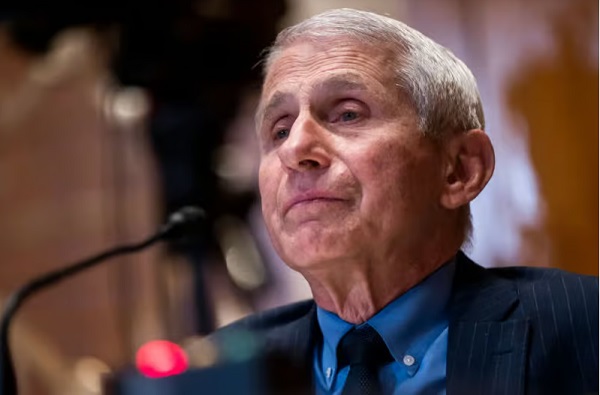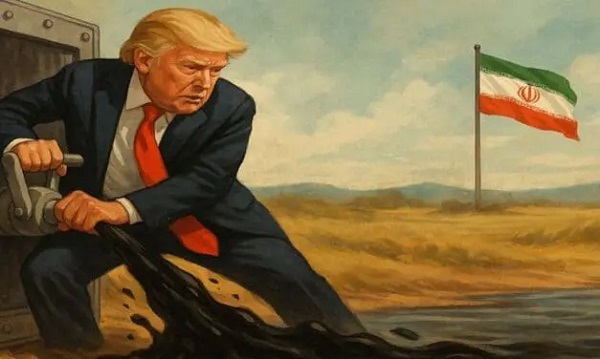Brownstone Institute
Trust “The Science”?

From the Brownstone Institute
BY
Thanksgiving weekend came and went in 2021. The soothsayers of Team Apocalypse were wrong again—the sky didn’t fall. Whole populations of families who dared to get together to celebrate were not wiped out. But that didn’t stop NIAID Director Dr. Anthony Fauci. The Covid fatality rate doesn’t hold a candle to the risk of standing between Dr. Fauci and a camera. After a few softball questions the television host of CBS’s Face the Nation asked Dr. Fauci about recent criticism of him from various corners. He replied:
So, it’s easy to criticize, but they’re really criticizing science because I represent science. That’s dangerous. To me, that’s more dangerous than the slings and the arrows that get thrown at me. I’m not going to be around here forever, but science is going to be here forever. And if you damage science, you are doing something very detrimental to society long after I leave. And that’s what I worry about.[i]
It is indeed dangerous to claim to represent science. Science doesn’t need sales reps, since it is the conceptualization of physical reality itself as determined by experiment and data. What Fauci truly represented is the authoritarian State with a capital “S.”
Emails released through the Freedom of Information Act show Fauci to be a manipulative man of politics, deftly brushing off lengthy diatribes against him or mustering forces to push back on Team Reality. It really is quite the position to be in as the highest paid federal employee in history to call upon the systematic enterprise of knowledge known as “science” to shield you from criticism.[ii]
The damage wrought upon our science as an actual institution is incalculable. As Dr. Jay Bhattacharya noted: “The current generation of top public health leaders will need to step down before trust is restored.”[iii]
The science is not what they say it is and you are not required to acquiesce to anyone’s determinations but your own. Indeed, when someone declares themselves to be the voice of authority in all things—run.
Science and the Application of Science Are Not the Same Thing
One keen realization our society must grapple with is separating the science from the application of that science. The science may indeed dictate that we experienced the spread of a highly transmissible deadly viral aerosolized respiratory pathogen, but it does not follow that you need to lose your job after that. Or that we ought to destroy the economy of a country. Or deprive a generation of children of proper learning.
Dr. Scott Atlas was lambasted by Team Apocalypse again and again for not being a virologist, but he was not sent to the White House to fix “the science”—he was there to fix the policy. Indeed, Dr. Atlas had keen and deep expertise in the application of science to public policy, something Dr. Fauci has failed at again and again in his career.
Our Constitution affords US citizens many enumerated rights and protections in our pursuit of happiness. Many of these endowed freedoms are couched in language specifically protecting us from the government writ large. While courts might attest to some extreme event placing some of these rights into dormancy, it did not give Dr. Fauci the right to put our rights, indeed our whole Constitution, into a coma.
The Institutions Lie. And Lie. And Lie.
Myriad once-trusted institutions have suffered greatly under the boom which Dr. Fauci and company lowered onto the American people and, frankly, the world.
The CDC has lost immense trust on all sides. From Dr. Redfield’s declaration that masks are better than vaccines to Dr. Walensky selling you a non-sterilizing sterilizing vaccine—this institution has wreaked the greatest havoc over the entire pandemic. They manipulated data, hid data, ignored data, invented data, deleted data, dismissed data, and all around succumbed to political pressure. Whether it was from teachers’ unions or a meddling White House, the CDC failed to provide any real leadership. With a budget of billions and over twenty thousand employees the amount of work they produced was puny and questionable at every step.
The National Institute of Health (NIH) is another behemoth that needs a thorough cleaning. Their (now) former director, Francis Collins, penned the infamous email calling out the signers of the Great Barrington Declaration.
“This proposal from the three fringe epidemiologists . . . seems to be getting a lot of attention—and even a co-signature from Nobel Prize winner Mike Leavitt at Stanford. There needs to be a quick and devastating published take down of its premises,” Collins ends the email: “Is it underway?”[iv]
If it wasn’t, the establishment institutional heads got in gear and made sure to jumpstart the process of attempting to destroy the reputations of the signers, all manifestly qualified and fantastically credentialled scientists and doctors.
The National Institute of Allergy and Infectious Diseases (NIAID) headed by Dr. Fauci is one of the key culprits stalling any real progress on trust and communication around these vital topics. Fauci and Collins are keenly involved with all areas of research in this federal healthcare monstrosity and influence millions of dollars in grants given every year. No wonder the spectrum of literature produced here did little to further any alternate views on lockdowns, masking, vaccines, and other COVID-19 implementations. The folks setting the policy also hold the purse strings.
It was obvious from the get-go that the structure of our county-centric administration of health policy was going to be problematic. These local health directors and advisors have little if any accountability. They are unelected bureaucrats and were given immense powers over the lives of citizens in their areas. The replete inconsistency with how federal health policy and information was conveyed to the public is an embarrassment. These county entities were given massive outlays of taxpayer dollars for the fruitless effort of contact tracing. The impact was not just on our wallets. As Jay Bhattacharya noted: “Hospital staffing shortages are at least in part due to rigidly enforced vaccine mandates and to mass asymptomatic testing and contact tracing. How many more people must suffer because of the monomaniacal focus on COVID at the expense of public health?” Contact tracing at the county level became a de facto quarantine machine, especially for students.
Most did it, many of us knowing it was pointless. But the pointlessness became the point. Comply, or you are a bad person. Comply or it’s no more school for you.
And comply many people did, thinking they would weather the madness, counting the cost on their hearts and spirits as worth the sacrifice for their children’s education. One more stricture, and the schools will open. Follow one more edict and the playground tape will come off. And so it went for two plus years. So it still goes in many places. We were duped, but we also duped ourselves.
Public Trust Was Destroyed
The impact on the public trust is massive. Curiously, after the 2009 H1N1 debacle, an article was published on the NIH website entitled: “’Listen to the People:’ Public Deliberation About Social Distancing Measures in a Pandemic”[v] The article notes the vital need for good and honest communication to the public about measures being taken the protect the citizenry. It notes: “Public engagement in ethically laden pandemic planning decisions may be important for transparency, creating public trust, improving compliance with public health orders, and ultimately, contributing to just outcomes.”
Ya’ think? This is something at which Fauci and company dramatically failed. At one point, early in the pandemic, Fauci advised against face masks but later admitted he was telling this “noble lie” to slow the impact on material needs and hospital settings. Honesty was a not a key feature of this pandemic.
The report continues: “We conducted focus groups with members of the public to characterize public perceptions about social distancing measures likely to be implemented during a pandemic. Participants expressed concerns about job security and economic strain on families if businesses or school closures are prolonged. They shared opposition to closure of religious organizations, citing the need for shared support and worship during times of crises.”
It was all right there. It is on the website of the National Institute of Health.
They ignored all of it.
The report concludes: “Social distancing measures may be challenging to implement and sustain due to strains on family resources and lack of trust in government.”
What a stark and terrible reminder that the institutions which prized themselves on public health damaged the public more than anything else. Your trust should be in the bedrock of our Constitution, not in some self-endowed title of “Science.”
Reprinted from the author’s Substack
Brownstone Institute
FDA Exposed: Hundreds of Drugs Approved without Proof They Work

From the Brownstone Institute
By
The US Food and Drug Administration (FDA) has approved hundreds of drugs without proof that they work—and in some cases, despite evidence that they cause harm.
That’s the finding of a blistering two-year investigation by medical journalists Jeanne Lenzer and Shannon Brownlee, published by The Lever.
Reviewing more than 400 drug approvals between 2013 and 2022, the authors found the agency repeatedly ignored its own scientific standards.
One expert put it bluntly—the FDA’s threshold for evidence “can’t go any lower because it’s already in the dirt.”
A System Built on Weak Evidence
The findings were damning—73% of drugs approved by the FDA during the study period failed to meet all four basic criteria for demonstrating “substantial evidence” of effectiveness.
Those four criteria—presence of a control group, replication in two well-conducted trials, blinding of participants and investigators, and the use of clinical endpoints like symptom relief or extended survival—are supposed to be the bedrock of drug evaluation.
Yet only 28% of drugs met all four criteria—40 drugs met none.
These aren’t obscure technicalities—they are the most basic safeguards to protect patients from ineffective or dangerous treatments.
But under political and industry pressure, the FDA has increasingly abandoned them in favour of speed and so-called “regulatory flexibility.”
Since the early 1990s, the agency has relied heavily on expedited pathways that fast-track drugs to market.
In theory, this balances urgency with scientific rigour. In practice, it has flipped the process. Companies can now get drugs approved before proving that they work, with the promise of follow-up trials later.
But, as Lenzer and Brownlee revealed, “Nearly half of the required follow-up studies are never completed—and those that are often fail to show the drugs work, even while they remain on the market.”
“This represents a seismic shift in FDA regulation that has been quietly accomplished with virtually no awareness by doctors or the public,” they added.
More than half the approvals examined relied on preliminary data—not solid evidence that patients lived longer, felt better, or functioned more effectively.
And even when follow-up studies are conducted, many rely on the same flawed surrogate measures rather than hard clinical outcomes.
The result: a regulatory system where the FDA no longer acts as a gatekeeper—but as a passive observer.
Cancer Drugs: High Stakes, Low Standards
Nowhere is this failure more visible than in oncology.
Only 3 out of 123 cancer drugs approved between 2013 and 2022 met all four of the FDA’s basic scientific standards.
Most—81%—were approved based on surrogate endpoints like tumour shrinkage, without any evidence that they improved survival or quality of life.
Take Copiktra, for example—a drug approved in 2018 for blood cancers. The FDA gave it the green light based on improved “progression-free survival,” a measure of how long a tumour stays stable.
But a review of post-marketing data showed that patients taking Copiktra died 11 months earlier than those on a comparator drug.
It took six years after those studies showed the drug reduced patients’ survival for the FDA to warn the public that Copiktra should not be used as a first- or second-line treatment for certain types of leukaemia and lymphoma, citing “an increased risk of treatment-related mortality.”
Elmiron: Ineffective, Dangerous—And Still on the Market
Another striking case is Elmiron, approved in 1996 for interstitial cystitis—a painful bladder condition.
The FDA authorized it based on “close to zero data,” on the condition that the company conduct a follow-up study to determine whether it actually worked.
That study wasn’t completed for 18 years—and when it was, it showed Elmiron was no better than placebo.
In the meantime, hundreds of patients suffered vision loss or blindness. Others were hospitalized with colitis. Some died.
Yet Elmiron is still on the market today. Doctors continue to prescribe it.
“Hundreds of thousands of patients have been exposed to the drug, and the American Urological Association lists it as the only FDA-approved medication for interstitial cystitis,” Lenzer and Brownlee reported.
“Dangling Approvals” and Regulatory Paralysis
The FDA even has a term—”dangling approvals”—for drugs that remain on the market despite failed or missing follow-up trials.
One notorious case is Avastin, approved in 2008 for metastatic breast cancer.
It was fast-tracked, again, based on ‘progression-free survival.’ But after five clinical trials showed no improvement in overall survival—and raised serious safety concerns—the FDA moved to revoke its approval for metastatic breast cancer.
The backlash was intense.
Drug companies and patient advocacy groups launched a campaign to keep Avastin on the market. FDA staff received violent threats. Police were posted outside the agency’s building.
The fallout was so severe that for more than two decades afterwards, the FDA did not initiate another involuntary drug withdrawal in the face of industry opposition.
Billions Wasted, Thousands Harmed
Between 2018 and 2021, US taxpayers—through Medicare and Medicaid—paid $18 billion for drugs approved under the condition that follow-up studies would be conducted. Many never were.
The cost in lives is even higher.
A 2015 study found that 86% of cancer drugs approved between 2008 and 2012 based on surrogate outcomes showed no evidence that they helped patients live longer.
An estimated 128,000 Americans die each year from the effects of properly prescribed medications—excluding opioid overdoses. That’s more than all deaths from illegal drugs combined.
A 2024 analysis by Danish physician Peter Gøtzsche found that adverse effects from prescription medicines now rank among the top three causes of death globally.
Doctors Misled by the Drug Labels
Despite the scale of the problem, most patients—and most doctors—have no idea.
A 2016 survey published in JAMA asked practising physicians a simple question—what does FDA approval actually mean?
Only 6% got it right.
The rest assumed that it meant the drug had shown clear, clinically meaningful benefits—such as helping patients live longer or feel better—and that the data was statistically sound.
But the FDA requires none of that.
Drugs can be approved based on a single small study, a surrogate endpoint, or marginal statistical findings. Labels are often based on limited data, yet many doctors take them at face value.
Harvard researcher Aaron Kesselheim, who led the survey, said the results were “disappointing, but not entirely surprising,” noting that few doctors are taught about how the FDA’s regulatory process actually works.
Instead, physicians often rely on labels, marketing, or assumptions—believing that if the FDA has authorized a drug, it must be both safe and effective.
But as The Lever investigation shows, that is not a safe assumption.
And without that knowledge, even well-meaning physicians may prescribe drugs that do little good—and cause real harm.
Who Is the FDA Working for?
In interviews with more than 100 experts, patients, and former regulators, Lenzer and Brownlee found widespread concern that the FDA has lost its way.
Many pointed to the agency’s dependence on industry money. A BMJ investigation in 2022 found that user fees now fund two-thirds of the FDA’s drug review budget—raising serious questions about independence.

Yale physician and regulatory expert Reshma Ramachandran said the system is in urgent need of reform.
“We need an agency that’s independent from the industry it regulates and that uses high-quality science to assess the safety and efficacy of new drugs,” she told The Lever. “Without that, we might as well go back to the days of snake oil and patent medicines.”
For now, patients remain unwitting participants in a vast, unspoken experiment—taking drugs that may never have been properly tested, trusting a regulator that too often fails to protect them.
And as Lenzer and Brownlee conclude, that trust is increasingly misplaced.
- Investigative report by Jeanne Lenzer and Shannon Brownlee at The Lever [link]
- Searchable public drug approval database [link]
- See my talk: Failure of Drug Regulation: Declining standards and institutional corruption
Republished from the author’s Substack
Brownstone Institute
Anthony Fauci Gets Demolished by White House in New Covid Update

From the Brownstone Institute
By
Anthony Fauci must be furious.
He spent years proudly being the public face of the country’s response to the Covid-19 pandemic. He did, however, flip-flop on almost every major issue, seamlessly managing to shift his guidance based on current political whims and an enormous desire to coerce behavior.
Nowhere was this more obvious than his dictates on masks. If you recall, in February 2020, Fauci infamously stated on 60 Minutes that masks didn’t work. That they didn’t provide the protection people thought they did, there were gaps in the fit, and wearing masks could actually make things worse by encouraging wearers to touch their face.
Just a few months later, he did a 180, then backtracked by making up a post-hoc justification for his initial remarks. Laughably, Fauci said that he recommended against masks to protect supply for healthcare workers, as if hospitals would ever buy cloth masks on Amazon like the general public.
Later in interviews, he guaranteed that cities or states that listened to his advice would fare better than those that didn’t. Masks would limit Covid transmission so effectively, he believed, that it would be immediately obvious which states had mandates and which didn’t. It was obvious, but not in the way he expected.

And now, finally, after years of being proven wrong, the White House has officially and thoroughly rebuked Fauci in every conceivable way.
White House Covid Page Points Out Fauci’s Duplicitous Guidance
A new White House official page points out, in detail, exactly where Fauci and the public health expert class went wrong on Covid.
It starts by laying out the case for the lab-leak origin of the coronavirus, with explanations of how Fauci and his partners misled the public by obscuring information and evidence. How they used the “FOIA lady” to hide emails, used private communications to avoid scrutiny, and downplayed the conduct of EcoHealth Alliance because they helped fund it.
They roast the World Health Organization for caving to China and attempting to broaden its powers in the aftermath of “abject failure.”
“The WHO’s response to the COVID-19 pandemic was an abject failure because it caved to pressure from the Chinese Communist Party and placed China’s political interests ahead of its international duties. Further, the WHO’s newest effort to solve the problems exacerbated by the COVID-19 pandemic — via a “Pandemic Treaty” — may harm the United States,” the site reads.
Social distancing is criticized, correctly pointing out that Fauci testified that there was no scientific data or evidence to support their specific recommendations.
“The ‘6 feet apart’ social distancing recommendation — which shut down schools and small business across the country — was arbitrary and not based on science. During closed door testimony, Dr. Fauci testified that the guidance ‘sort of just appeared.’”
There’s another section demolishing the extended lockdowns that came into effect in blue states like California, Illinois, and New York. Even the initial lockdown, the “15 Days to Slow the Spread,” was a poorly reasoned policy that had no chance of working; extended closures were immensely harmful with no demonstrable benefit.
“Prolonged lockdowns caused immeasurable harm to not only the American economy, but also to the mental and physical health of Americans, with a particularly negative effect on younger citizens. Rather than prioritizing the protection of the most vulnerable populations, federal and state government policies forced millions of Americans to forgo crucial elements of a healthy and financially sound life,” it says.
Then there’s the good stuff: mask mandates. While there’s plenty more detail that could be added, it’s immensely rewarding to see, finally, the truth on an official White House website. Masks don’t work. There’s no evidence supporting mandates, and public health, especially Fauci, flip-flopped without supporting data.
“There was no conclusive evidence that masks effectively protected Americans from COVID-19. Public health officials flipped-flopped on the efficacy of masks without providing Americans scientific data — causing a massive uptick in public distrust.”
This is inarguably true. There were no new studies or data justifying the flip-flop, just wishful thinking and guessing based on results in Asia. It was an inexcusable, world-changing policy that had no basis in evidence, but was treated as equivalent to gospel truth by a willing media and left-wing politicians.
Over time, the CDC and Fauci relied on ridiculous “studies” that were quickly debunked, anecdotes, and ever-shifting goal posts. Wear one cloth mask turned to wear a surgical mask. That turned into “wear two masks,” then wear an N95, then wear two N95s.
All the while ignoring that jurisdictions that tried “high-quality” mask mandates also failed in spectacular fashion.

And that the only high-quality evidence review on masking confirmed no masks worked, even N95s, to prevent Covid transmission, as well as hearing that the CDC knew masks didn’t work anyway.
The website ends with a complete and thorough rebuke of the public health establishment and the Biden administration’s disastrous efforts to censor those who disagreed.
“Public health officials often mislead the American people through conflicting messaging, knee-jerk reactions, and a lack of transparency. Most egregiously, the federal government demonized alternative treatments and disfavored narratives, such as the lab-leak theory, in a shameful effort to coerce and control the American people’s health decisions.
When those efforts failed, the Biden Administration resorted to ‘outright censorship—coercing and colluding with the world’s largest social media companies to censor all COVID-19-related dissent.’”
About time these truths are acknowledged in a public, authoritative manner. Masks don’t work. Lockdowns don’t work. Fauci lied and helped cover up damning evidence.
If only this website had been available years ago.
Though, of course, knowing the media’s political beliefs, they’d have ignored it then, too.
Republished from the author’s Substack
-

 Agriculture2 days ago
Agriculture2 days agoCanada’s supply management system is failing consumers
-

 Economy2 days ago
Economy2 days agoTrump opens door to Iranian oil exports
-

 Alberta1 day ago
Alberta1 day agoCOVID mandates protester in Canada released on bail after over 2 years in jail
-

 Business24 hours ago
Business24 hours agoCanada’s loyalty to globalism is bleeding our economy dry
-

 armed forces23 hours ago
armed forces23 hours agoCanada’s Military Can’t Be Fixed With Cash Alone
-

 Crime1 day ago
Crime1 day agoProject Sleeping Giant: Inside the Chinese Mercantile Machine Linking Beijing’s Underground Banks and the Sinaloa Cartel
-

 Alberta1 day ago
Alberta1 day agoAlberta uncorks new rules for liquor and cannabis
-

 Business1 day ago
Business1 day agoCarney’s spending makes Trudeau look like a cheapskate







